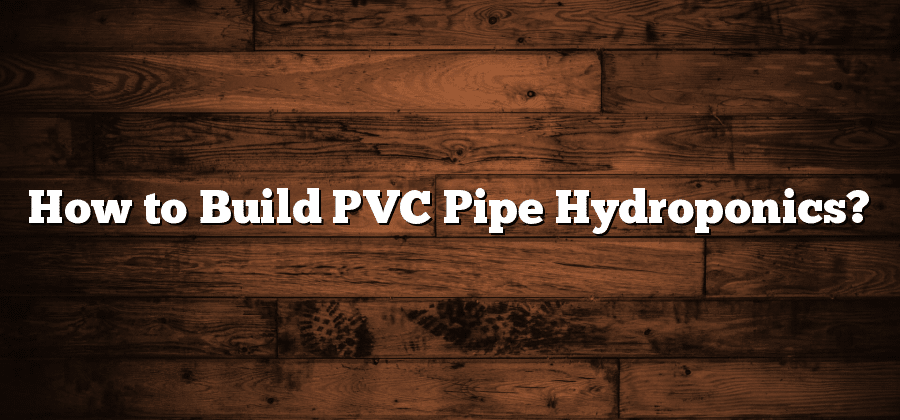Understanding the Basics of Hydroponics Systems
Hydroponics systems have gained popularity in recent years as a sustainable and efficient method of growing plants. Unlike traditional soil-based gardening, hydroponics utilizes a nutrient-rich water solution as the growing medium. This method allows plants to flourish in a controlled environment where light, temperature, and nutrient levels can be precisely optimized for plant growth.
One of the key advantages of hydroponics systems is their ability to conserve water. Unlike conventional gardening, where a significant amount of water is lost through evaporation or seepage into the ground, hydroponics recirculates the water, reducing water consumption and minimizing waste. Furthermore, due to the absence of soil, hydroponics eliminates the need for weeding and soil-borne pests, resulting in healthier plants and higher crop yields. By understanding the basics of hydroponics systems, individuals can take their gardening to the next level and reap the rewards of a sustainable and productive growing method.
Selecting the Right PVC Pipe for Your Hydroponics Setup
When it comes to selecting the right PVC pipe for your hydroponics setup, there are a few key factors to consider. Firstly, you’ll want to think about the size and diameter of the pipe. This will depend on the scale of your hydroponics system and the amount of water and nutrients you plan to flow through it. It’s important to choose a pipe that can handle the volume and pressure required for optimal plant growth. Additionally, consider the material of the PVC pipe. It’s best to select a pipe that is food-grade, as this ensures that no harmful chemicals will leach into your hydroponic solution. PVC pipes that are specifically labeled as being safe for potable water use are a good option.
Next, take into account the durability and flexibility of the PVC pipe. Look for pipes that are resistant to cracks, impact, and UV damage, as these will have a longer lifespan and require less maintenance. Additionally, flexible PVC pipes can be beneficial as they are easier to maneuver and adapt to the layout of your hydroponics system. Lastly, consider the cost of the PVC pipe. While it’s important to invest in a high-quality pipe, it’s also important to find one that fits within your budget. Look for competitive pricing and compare different brands and suppliers to ensure you’re getting the best value for your money.
Gathering the Necessary Tools and Materials for Your Project
One of the crucial aspects of successfully setting up a PVC pipe hydroponics system is ensuring that you have all the necessary tools and materials in hand before you begin your project. By gathering everything you need beforehand, you can save yourself time and effort in the long run.
Firstly, you will need to obtain a variety of tools that are essential for assembling the PVC pipe structure. These include a hacksaw or PVC pipe cutter for cutting the pipes to the desired length, a measuring tape to ensure accurate measurements, and a file or sandpaper to smooth the edges of the cut pipes. Additionally, having a drill and appropriate drill bits will come in handy when attaching the pipes together.
Designing and Planning Your PVC Pipe Hydroponics System
When it comes to designing and planning your PVC pipe hydroponics system, there are several key factors to consider. First and foremost, you need to determine the size and scale of your system. Are you planning to set up a small-scale system for personal use, or do you have ambitions of creating a larger commercial operation?
Once you have established the size of your system, you need to consider the specific requirements of the plants you wish to grow. Different plants have different needs in terms of lighting, nutrient solution, and spacing. Take the time to research the specific requirements of the plants you plan to grow and ensure that your system can accommodate these needs. It is also important to consider the available space you have for your hydroponics system, as this will impact the design and layout of your PVC pipe structure. Overall, careful planning and consideration of these factors will help set the foundation for a successful PVC pipe hydroponics system.
Building the Structure: Assembling the PVC Pipes
To start assembling the PVC pipes for your hydroponics system, begin by laying out all the necessary components and tools in an organized manner. This will ensure a smooth and efficient construction process. Carefully follow the design and plans you have already created, as any deviations may affect the overall functionality of the system. Start by connecting the pipes using appropriate connectors and fittings, making sure they are secure and tightly fitted. It is essential to measure and cut the PVC pipes accurately to ensure proper alignment and stability. Once the pipes are connected, double-check the entire structure to ensure it is sturdy and stable.
After assembling the PVC pipes, it is crucial to test the system for any leaks or loose fittings. Fill the system with water and observe for any signs of leakage. Tighten any loose fittings and retest until the structure is watertight. Additionally, ensure that all the pipes and fittings are securely glued to prevent any potential leaks in the future. Properly assembled and secure PVC pipes will play a significant role in the success and efficiency of your hydroponics system.






